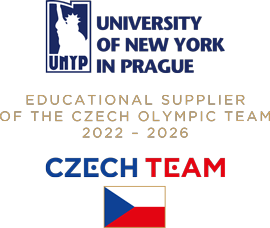Islamophobia in Europe: is the media to blame?

A recently published report by the Pew Research Center documents vast differences across Europe in public attitudes toward Muslims. It is interesting that the proportion of citizens of Central and Eastern European countries who say that they would be willing to accept Muslims as members of their family is considerably lower than in Western Europe. A similar pattern is shown in the recent special Eurobarometer public opinion poll on the integration of immigrants into the EU. In the Czech Republic, Bulgaria and Hungary, only a small minority of respondents are totally comfortable having social relations with immigrants, and over a third of the polled citizens of Slovakia, the Czech Republic, Bulgaria, and Hungary would feel uncomfortable with having an immigrant as a neighbour. Again, these numbers are the highest in the entire EU.
What is even more interesting is that compared to the Czech Republic, only Armenians are less willing to welcome Muslims as family members. While the position of Armenians can be understood as originating from historical grievances stemming from the massacres and genocide conducted by the Ottoman Empire, what has happened in the Czech Republic is less clear. In some recent research, I demonstrate that part of the explanation may lie in media portrayals of immigrants. Media coverage is of particular importance as it provides a critical backdrop for the formation of public opinion, and for the interpretation of the issues by members of the public. By using a particular interpretational lens in regard to evolving events, media coverage serves as a cognitive cue for the public’s comprehension of these events and support for particular policies. In the context of immigration, media portrayal is particularly significant because citizens mainly learn about immigration indirectly through the media rather than through everyday experiences.
We found that to a lesser extent, immigrants were also portrayed as a threat to the identity and culture of the host countries and to the economy.
My colleagues and I have shown that during the EU migration crisis (2013-2016), immigrants were primarily framed and portrayed in Czech and Slovak news media as a security threat. This security threat framing occurred in some 77% of the analysed Czech media news stories, and 67% of the analysed Slovak media news stories. It is particularly significant that this type of security threat framing is employed more often in Central and Eastern European countries than in Western Europe. We found that to a lesser extent, immigrants were also portrayed as a threat to the identity and culture of the host countries (approximately 45% of news stories employed this narrative in Czech media and 40% in Slovak media) and to the economy (27% of news items in Czech media and 31% of news items in Slovak media featured an economic narrative). Finally, we found that a humanitarian narrative was used very rarely in articles about immigration: only approximately 6% of Czech and 9% of Slovak news items featured humanitarian and victim-based perspectives.
Given these trends in the media portrayal of immigrants, it is not surprising that within Europe, Czech citizens are among those who are least comfortable with immigrants and least willing to welcome Muslims as members of their family. While the media, public opinion and politicians mutually influence one another and it is extremely difficult to isolate cause and effect, we can legitimately assume that the media portrayal of immigrants in the Czech Republic partly explains the negative attitudes towards immigrants.
Related Articles
UNYP Chronicle Newsletter
The e-mail address you provide will be used only to send you the newsletter. Your privacy is important to us.
For more information download our UNYP Brochure.

Contacts
University of New York in Prague
Londýnská 41, 120 00 Praha
ID no: 25676598
Phone:
+420 224 221 261
![]() Skype
Skype
Email: unyp@unyp.cz








